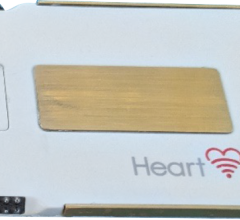
An example of an automated summary cardiac monitor report from Medicalgorithmics' PocketECG system. Most of the the report parameters can be opened as separate pages with additional automated report summaries and graphical data charts.
There is a movement toward real-time, remote cardiac monitoring with the latest generation of event and Holter monitor systems. However, to be successful and to be able to sort through and make large amounts of streaming, real-time information actionable, a high level of automation is necessary. This is where we will see smart algorithms and artificial intelligence playing an increasingly larger role in cardiology.
A differentiation needs to be made between systems offering continuous recording and continuous monitoring. If a system does not have a way to wirelessly connect to a monitoring company, clinicians will not be notified of any critical events until after the monitoring device is returned to the doctor's office. With real-time monitoring, if enough data is collected to make a specific diagnosis, the patient can be notified to come back to the doctor's office for consultation, rather than waiting days or weeks for the patient to drop off the device and have the data downloaded and analyzed. This can speed patient therapy and potentially cut the time needed to monitor patients.
The length of monitoring today is also starting to extend beyond the traditional 48 hours to several days or weeks. Capturing larger amounts of real-time cardiac data allows for a complete picture of a patient's cardiovascular health. Real-time monitoring also can allow for immediate intervention, or patient callbacks if enough data has been gathered to diagnose their condition. The depth of data from devices recording all cardiac function 24/7 offers a clearer picture over small snippets of information from a couple events, or from short duration 24-48 hour recordings. This depth of data also allows for more detailed statistical analysis.
However, capturing vast amounts of data over days or weeks would be labor intensive to manually dig through to extract relevant data, or to tabulate statistical analysis. For this reason, numerous vendors now offer software algorithms to automate this review process. Several days worth of data can now be processed in minutes to pull out the relevant information and condense it into a useable report format for cardiologists.
The Rise of Smart ECG Algorithms
In the late 1990s and early 2000s, several vendors introduced first generation smart algorithms for automatic arrhythmia detection with in-hospital patient monitoring systems. There were high hopes this technology would eliminate the need for human monitoring of the ECG data. But, while these system worked well in product demos, they did not always perform as well in real life. However, this technology has greatly improved over the past decade and is now being used with event monitors, Holters, wearable devices and smartphone-based ECG monitors.
Smart algorithms integrated into most Holter monitoring systems are retrospective and do a pretty good job of determining premature ventricular contractions (PVCs), tachycardia, bradycardia, pauses and normal rhythms, but atrial fibrillation (AFib) has been a problem for some algorithms. More recently, some vendors have developed artificial intelligence (AI)-based software to do a better job of detecting AFib. Examples of this include ScottCare's TeleSense WIFI event monitor and HolterCare analysis software. AliveCor, which offers a clinical grade, smartphone-based, single-lead ECG device, also developed an algorithm in its app to help detect AFib. iBeat, CardioLogs and other vendors also have recently introduced AFib detection software.
Most of the current generation remote cardiac event and Holter vendors offer smart software that can autogenerate complete statistical reports with graphical presentation of arrhythmias, pauses, heart rate and other parameters in an easy-to-read diagnostic report.
Advanced AI algorithms are now entering the market. AI will operate in the background of the monitoring software, constantly reviewing real-time streamed patient data, or quickly reviewing days or weeks of recorded data in seconds. This will likely be a big help in triaging cardiac events. However, AI is not a perfect one-size-fits-all solution. AI might be extremely helpful, but physicians need to understand its limitations. Also, not all patients have the exact same clinical presentations that neatly fit into pre-defined software grading categories.
Automated, Advanced Reporting
A good example of a company that has developed advanced, automated real-time review software is Medicalgorithmics' PocketECG solution. It offers an algorithmically advanced system that combines software, hardware and telecommunications into one platform. Physicians can access full-disclosure ECG data and complete statistical reports online on any device through a standard web browser. It also has a built-in accelerometer to correlate the patient's physical activity to arrhythmia and symptoms. The vendor said this can be useful for the rate control in the management of AFib.
The PocketECG technology recognizes the morphology of each individual heartbeat and allows differentiating between normal and abnormal heartbeats including ventricular ectopy, supraventricular ectopy, aberrated supraventricular beats and waveform artifacts. This functionality monitors the continuous stream of real-time, remote monitoring ECG data for up to several weeks. It calculates heart rate variability (HRV) statistics over the extended monitoring period. The system also has the ability to calculate detailed arrhythmia statistics for extended monitoring and to identify HRV changes and morphology of each individual QRS complex.
The automated analysis software allows creation of several different reports. It offers rate and rhythm analysis and percentage reports on sinus rhythm beats versus atrial fibrillation beats per minute by day recorded. The system also identifies the morphology of each beat to aid analysis of the frequency of ventricular and atrial ectopic beat occurrences per minute, hour, day, week or month. It also can detect ventricular and superventricular tachycardia and complex arrhythmias like ventricular and supraventricular bigeminy and trigemini. This can help measure the conduction of heart rate variability and heart rate turbulence.
Cardiac Insight's Cardea Solo patch-type monitor system is being marketed to providers as a way to eliminate the extra step and fees associated with using a third-party company to review and record the data. Instead, the provider pulls a data pod from the wearable device and plugs it into a reader and the software automatically downloads the continuously recorded patient data. The comprehensive data can be retrieved in the physician’s office for analysis using the software’s robust set of ECG algorithms and interactive full-disclosure trace review tools.
This is Part IV of a series of blogs on advances in cardiac monitoring technology. Read the other blogs in the series:
Movement Toward Simpler, Wearable Cardiac Monitoring
Real-time vs. Post-monitoring Review Approaches to Holter, Event Recording
Extending Cardiac Monitoring Duration Catches Sporadic Events, Improves Diagnosis
Advances in Cardiac ECG Monitoring Technologies



 April 28, 2025
April 28, 2025 


